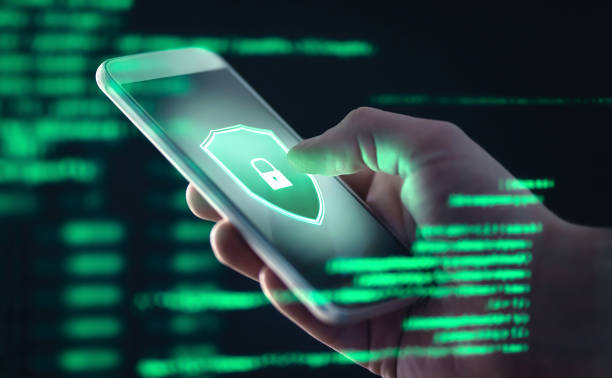You’re mistaken if you believe fingerprint scanners or Face ID will enhance the phone security. International Mobile Subscriber Identity (IMSI) Catchers are causing havoc on information security worldwide. While not exactly new, this hacking technique has quickly become the primary weapon for snooping on unwary mobile phone users.
Users of cellular phones should be concerned about this. MNOs should be ready to notice the writing on the wall if we are to learn anything from the govt crackdown on firms entrusted with protecting, collecting, and processing data sent through digital communications.
MNOs will soon be subjected to more inspection and compelled to install extra layers of cyber security to their systems. Meanwhile, users are becoming increasingly concerned about eavesdropping and the theft of their private information by would-be hackers. MNOs who wish to deliver added value to their customers should think about the extra layers of protection they may offer.
Man in the Middle Attacks with IMSI Catchers are among the most common ways for hackers to compromise mobile phones. These Stingray-like devices are capable of many harmful activities, including real-time location tracking, data harvesting, and identity theft. Man in the Middle attacks and IMSI Catchers ought to be a top priority for worried MNOs.
What is an IMSI Catcher?
IMSI Catchers imitate cellphone towers, tricking the victim’s phone into connecting to them. The communication (Internet traffic, text messages, calls, etc.) is routed and intercepted at the telecom carrier’s target cellphone tower. The victim is often oblivious to what is going on to complicate things further. A MitM attack is another name for this sort of hack.
What is the mechanism behind this contraption?
This hacktivist conduct is conceivable because of a flaw in the GSM network. Cellphones are continually searching for the tower with the best coverage; generally, the closest one offers the optimum range. It’s possible, however, that it’s not a legitimate cell carrier tower.
When a cellphone connects to a cellphone tower, it uses its International Mobile Subscriber Identity to verify its identity. International Mobile Subscriber Identity is a unique ID link to verify your phone to the mobile phone network with your SIM card. The problem is that the tower is not required to identify back.
It is one of the reasons why the IMSI Catcher is so successful. It poses as a cellphone tower close to your device, links to it, and begins collecting data.
IMSI Catchers: Three Types of Cyber Attacks
Communication Interception
It is the most fundamental type of hacking that is the practice today. In a basic form of digital identity theft, the hackers “capture” the phone’s International Mobile Subscriber Identity. Spoofing verification is the next phase in which the Stingray “persuades” the legitimate cellular connection that it is, in fact, the targeted cellular device for all purposes of communication. The IMSI Catcher identifies itself with the obtained IMSI by delivering a Location Change Request to an actual cellphone tower. Because the victim’s device “assists” with the demands, dealing with phone encryption security systems is also not a difficult task.
Location Tracking
Location tracking, which needs no assistance from cellular carriers and security solution companies also disregard it, is becoming more and more frequent. To trace criminals or suspects, law enforcement agencies (generally) need permission and the assistance of mobile carriers. Without the requirement for operator assistance, IMSI Catchers may now verify the existence of a victim or culprit in a given area or even find out their actual location.
Denial of Service (DoS)
A mobile network denial of service happens by connecting the phone to a fake cellphone tower. The phone denies the phony cellphone tower access since it has no link to the actual network. The phone is only linked to the network thru the hacker’s system if the attacker decides to do so (aka Man-in-the-Middle).
IMSI Catcher Detection Solutions for 2022
FirstPoint Mobile Guard
FirstPoint Mobile Guard delivers distinctive defense capabilities for detecting IMSI Catchers and preventing Man in the Middle attacks at the network level. The essential advantage of this system is it’s simple to use. It develops for cutting-edge security on the SIM-card level and mass deployment in huge enterprises.
Place the FirstPoint SIM card into the IoT device or smartphone to be protected, and FirstPoint will take care of the rest. This technology is ideal for governments and businesses looking for maximum security with minimum effort. Once deployed in staff devices, this cyber security-as-a-service delivers continual network-based security with minimal to no maintenance.
Android IMSI Catcher Detector
Android IMSI Catcher Detector is a fully accessible Android application that detects and avoids IMSI Catchers and other base stations (cellular antennae) with inadequate or no encryption, as the name implies. This system also alerts consumers if network ciphering is disabled and when their devices are being tracked invisibly through Stealth/Silent (Type-0) SMS. AIMSICD also includes several other security features that safeguard you from IMSI and different sorts of cellular network threats.
AIMSICD also contains a map-based protection analysis of the mobile network region and a real-time network protection status indication.
SecurCube
On LTE connections, the SecurCube technology identifies unauthorized IMSI Catcher activities. It collects data on all of the cellphone towers in the area by monitoring the communication network. The next stage is to examine the bandwidths of LTE, GSM, and UMTS to look for abnormal activities. When a threat identifies, the user gets a real-time warning.
SnoopSnitch
To defeat IMSI Catchers, SnoopSnitch (another fully accessible application) takes a different technique. It examines the firmware on your smartphone for missing or installed Android security fixes (even on rooted phones). SnoopSnitch can also gather and analyze phone radio data to alert you to hazards such as user tracking and IMSI catchers and to keep you informed of your cellular network security.
SnoopSnitch is a community-based application. The patch assessment findings and firmware build data are uploaded to the company’s server to enable upgrades and improvements.
























